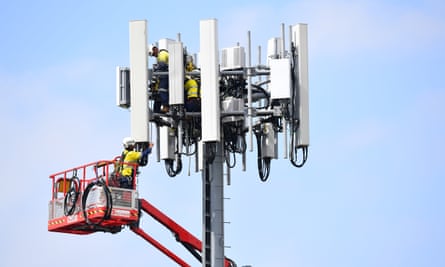If what is safe distance from 5g tower 've ever been through a town you might have noticed tiny 5G cell towers on street light poles. They appear like tiny boxes, but they're actually broadcasting wireless signals from cell phone providers to your phone.
They are replacing the larger, purpose-built cell towers. Although they're not as visible but they can still create issues for users.
The FCC's Radiation Exposure Thresholds
The FCC's Radiation Exposure Thresholds determine the safe limit at which an individual can be exposed to electromagnetic energy generated by wireless devices. The exposure limits are based upon scientific research which show that the energy of RF can be harmful to human health.
The absorption rate specific (SAR) is an indicator of the amount of radiofrequency energy that is absorption by tissues. It's typically 1.6 watts per kilogram, spread over a gram of tissue.
Since 5g is able to transmit at higher frequencies, it has the potential to increase the intensity of energy on the skin and other exposed body areas. This can result in many potential harms, including exacerbated the development of skin conditions such as dermatitis, skin cancer and cataracts.
Because of the potentially severe effects of 5g radiation, PSU has chosen to establish a general, localized maximum power density of four MW/cm2 averaged on 1cm2, and not exceeding 30 minutes for all 5G services running at 3000 GHz. This limit for localization is in line with the peak spatial-average SAR of 1.6 W/kg, which is averaged over 1 grams of tissues at six GHz.
The FCC's Maximum Exposure Thresholds for Maximum Exposure
If you've ever used a mobile phone, you're probably aware that the safest distance from the tower is at least 400 meters. This is due to the power of transmission from cell towers increases drastically the further away the tower is.
While what is a safe distance from a cell tower sounds like something that's good however, people who live close to towers could be more susceptible to health problems. For example, a study from 2014 in India discovered that people who lived within 50 meters of cell towers had much more health problems than those living further away from the antennas.
But, the study showed that residents who moved to areas further away from cell towers noticed their symptoms improve within a couple of days. Studies have also demonstrated that exposure to extreme frequencies of radiofrequency electromagnetic fields (EMFs) could cause brain tumors, cancer, and other health problems.
This is because RF radiation, which is used in wireless communication can penetrate the human body's exterior layer, which is the skin. This is vital to be aware of since the skin functions as a protective barrier against injuries caused by mechanical forces, infections from pathogenic microorganisms, as well as entry of toxic substances. It is also the most important organ of the human body. https://zenwriting.net/bassdinghy4/can-there-be-any-harm-through-5g is accountable for maintaining the integrity of other organs.
The FCC's Minimum Exposure Thresholds
The FCC's Minimum Exposure Thresholds rely on numerous assumptions that are not supported by scientific research. This includes the false assumption that short-term exposures to RF radiation are safe due to the limited radiation penetration in the human body (i.e. thermal heating of tissue).
This assumption does not take into account the deeper penetration of the ELF components of modulated RF signals as well as the effects of short bursts of heat from pulsed RF waves. These theories are not compatible with the current understanding of biological effects of RF radiation. As such, they should not be used for health protective exposure standards.

Furthermore to that, ICNIRP and FCC restrict its maximum levels of radiation exposure for local peak SARs, based on the maximum speed of spatial absorption (psSAR), which can be described as not a sufficient dosimetric tool to determine the degree of exposure to RF radiation. In particular the psSAR tool is not accurate for frequencies that exceed 6 GHz. Additionally, psSAR hasn't been evaluated for RF radiation exposed to other agents of the environment such as sunlight. Interactions of RF radiation with other environmental agents may result in antagonistic or synergistic impacts. This could result in an increased risk of negative health adverse effects. For example, co-exposure to RF radiation along with exposure to sunlight can cause an increase in the incidence of skin cancer, as well as aggravate other skin conditions like acne.
